Found a used, unbranded and uncertified but free Diabase surface plate of the oddest dimensions: 413 x 266 x 72 mm.
As to its flatness there wasn't any markings whatsoever, so for a fast check I winged together a quick and cheap "Spherometer" as per suggestions on: http://bobmay.astronomy.net/spherometer/spherometer.htm
My 1 micron/ div indicator sitting in the middle of the Spherical Comparator (bottom of a former IKEA frying pan, hence the faded Teflon), together with 3 M4 x 0.7 mm SHCS bolts with silver soldered 1/10" ball bearings as a point against the surface to be measured. Variable radii (110, 82,5 & 55 mm) to get into the corners/ measure smaller items. The snag is: I don't have a calibrated surface plate to zero the thing on - it'll only measure the surface's deviations of the plane - and even a perfect sphere (of a few miles' radius) would read zero deviation though not being "flat" at all.
So, armed with straight edges, 1-2-3-blocks and indicators I tried to get some figures of its flatness, but didn't get consistent readings.
Checking around the web, finding that the Rahn "Repeat-o-Meter" was the second best to have, short of an auto-collimator :
The Rahn would set me back over 1600 bucks + shipping (even without the indicator), and as I personally think their "meter" is pretty badly conceived and machined even worse - these two traits I could manage myself for free from scrap pieces and perhaps improve the design on-the-go:
Top-down: Thermoplastics handle from an old door, cut & drilled to accept the side bolts into the brass standoffs. Long bolts hold the drilled and turned standoffs (former electric plug pins) and the 3 pieces of hot rolled steel to the base plate. The two 30 x 10 (205 & 170mm long) pieces are slot milled for less springiness with full parallellism. Fine adjust differential screw: M4 x 0.7 & M6 x 0.75 (equals 0,05mm pitch). Spacer flat a mere 30 x 5 x 105. Base plate (100 x 54 x 32 mm) and arm from a cut, milled & faced old stage weight of lo-grade and porous Cast iron. Arm pivots on two side mounted hollow point grub screws pinching (by 4 mm ball bearings) a 2 mm thru-hole in the arm, Feet outta 12 mm ball bearings (HRC 60-64) pressed into base, ground and honed flat. Footprint/dia 11 and c-c; 190 x 38 mm. (The Rahn original boasts an overall length of 10" - which is absolutely unwieldy on my small plate.) M5 & M6 Allen and hex bolts 12.9 throughout. - The tool's dimensions isn't crucial as long as the feet are parallell. Barely visible is the arm's "Travel Lock" made from yet another turned and tapped electrical 8 mm plug pin. Hallmarks of DIYSwede's Workshop: simple, rough, operational and free, as well as positively accurate and absolutely repeatable. Approximately 20 hours of work went into it.
So, as you all might ask: -How did it do? -Better than I thought it would, for this POS. Repeatable, consistent readings showed the plate to be <1,5 mu-meter in deviation, and would thus render an "AA" grade, had it been sitting in a climate controlled room (which it really isn't). Took me some 20 minutes to crosscheck the plate on all axes and diagonals from both directions. Perhaps the measures xls file could print out a snazzy 3d plot of it - we'll see about that - as of now I'll just want to stash the meter away for a coupla years and use the "DIYSwede cralibated" labeled plate for my projects.
Add'l pics & info: DIYSwede's Repeat-O-Meter - Meccano Gallery


 LinkBack URL
LinkBack URL About LinkBacks
About LinkBacks
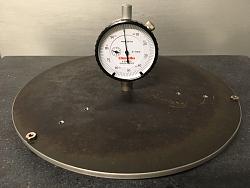
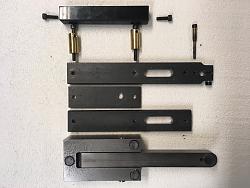
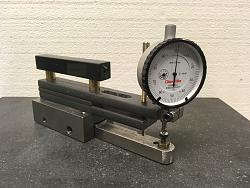


 Reply With Quote
Reply With Quote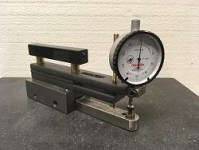

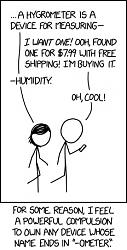




Bookmarks